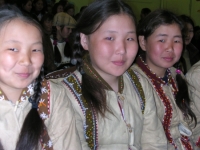Introduction

Against the backdrop of rapidly changing arctic environments, it is critical to understand how people living in the Arctic perceive, understand, and respond to those changes. It is also imperative to understand how arctic change is perceived outside the Arctic, including how these perceptions—accurate or not—influence the development of policy. Because the Arctic varies dramatically across time and space, across ecosystems and cultures, collaboration with local communities in the investigation, analysis, and communication of studies is central for the most comprehensive understanding on local, regional, national, and global levels. Furthermore, since human perceptions and responses are shaped largely by cultural norms and other social and economic forces, they are most appropriately studied through social research. For example, as Arctic societies perceive, anticipate, and respond to arctic change, their active role complicates modeled and other natural science prediction. Therefore, to address human responses to arctic change both within Arctic societies, and in the more distant but also critically involved society outside the Arctic, this goal requires strong links with social science.
Objectives (5‐Year Timeframe)
1. Understand Arctic inhabitants’ experiences and responses to environmental change, and develop methods to anticipate future adaptations.
1.1. Summarize findings to date on how Arctic communities, both urban and rural, are perceiving, understanding, responding, and adapting to arctic change.
1.2. Generate a comprehensive assessment of societal response based on that summary.
1.3. Develop community-relevant scenarios of sea ice loss, permafrost degradation, coastal erosion, and other environmental change that will affect communities into the future.
1.4. Conduct cross-sectional and longitudinal studies of responses, policies, and unintended consequences of change (for example, with respect to relocation of threatened communities, changes in transportation modes and routes, and access to and location of resources) to provide insights for near-future choices.
2. Assess and improve public and policy perceptions and knowledge about arctic environmental issues
2.1. Design and conduct rigorous studies of perceptions and knowledge about arctic environmental issues among the general public, Arctic residents, and other stakeholders.
2.2. Evaluate the progress to date, the gaps in and the successes and failures of, efforts to communicate and educate the broad public about arctic change.
2.3. Develop innovative ways to strengthen communication efforts especially through effective outreach and education approaches that build on the findings of this research.
Science Steering Committee Contacts: Susan Crate (scrate1 [at] gmu.edu), Larry Hamilton (lawrence.hamilton [at] unh.edu), Karen Pletnikoff (karenp [at] apiai.org)
Version: January 2013
